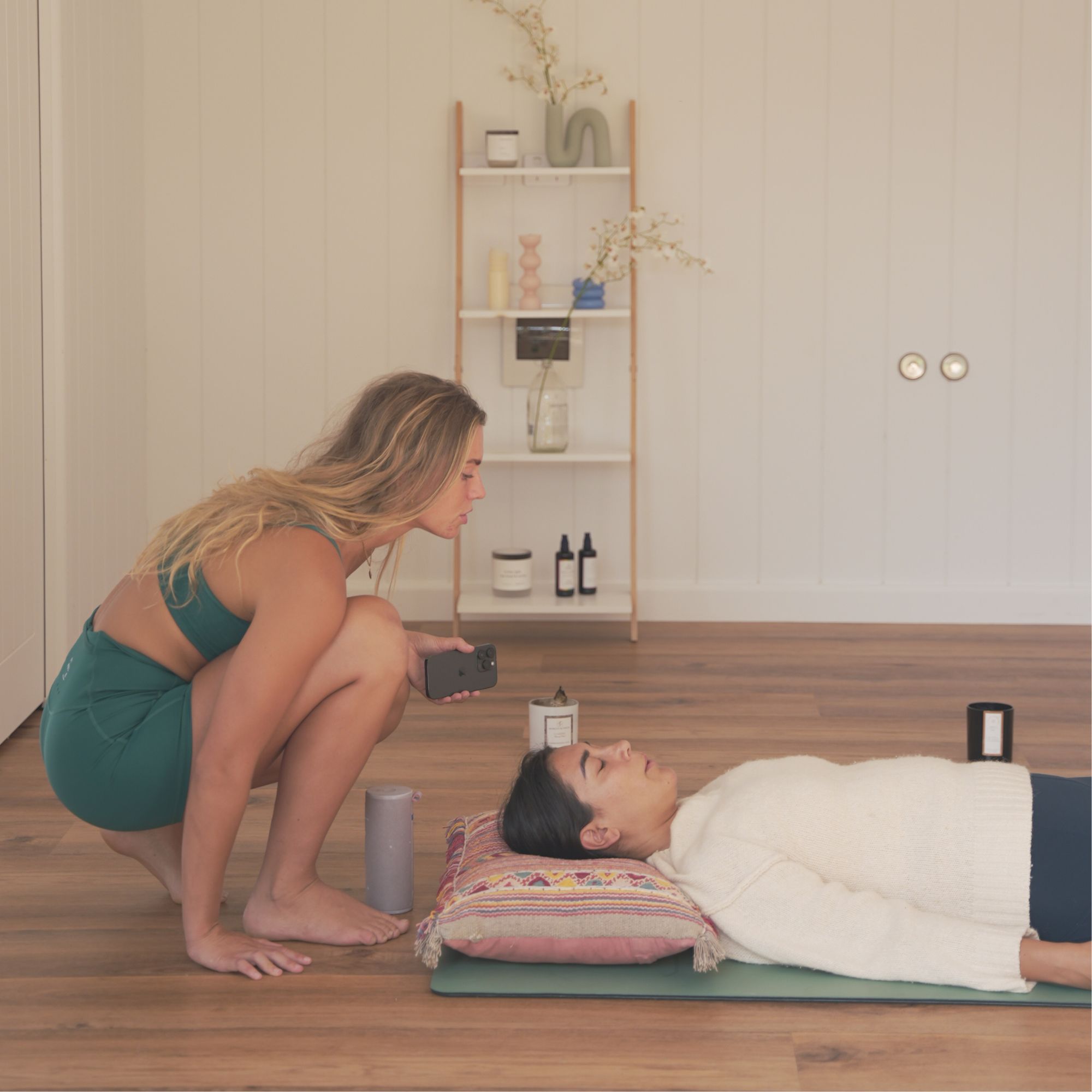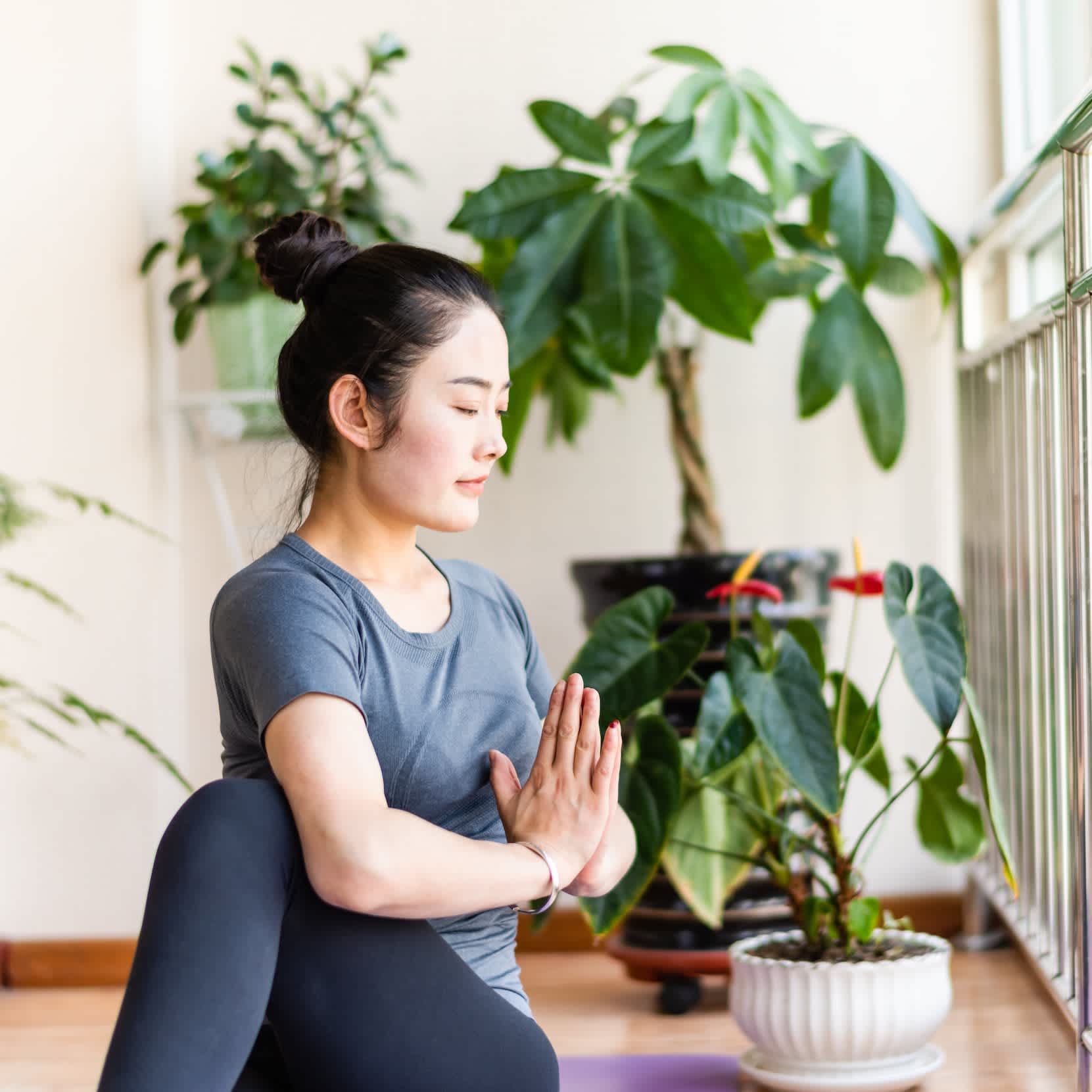
- POPSUGAR Australia
- Fitness
- I Thought Breathwork Was Like Meditating, I Was So Wrong
I Thought Breathwork Was Like Meditating, I Was So Wrong

I’m lying on my back on the studio floor. My arms, palms up, beside me feel like they’re buzzing. A single tear slides down my cheek. I’m nearing the end of my first breathwork session.
Though breathwork dates thousands of years old, it’s recently become more mainstream, with Dutch motivational speaker Wim Hof sharing about it, and the practice offered at an increasing number of studios around the world. It’s been proven to balance blood pressure, boost your time in deep sleep and help release stress hormones from your body.
“When you take time to slow down and purposefully breathe deeply and slowly, you tell your brain that everything is OK,” states WebMD. “Your brain communicates to your body that it’s safe to relax. The fight or flight response decreases, and your body can begin to function normally again.”
I’d thought it was like meditating, but I was so wrong. I’d seen a breathwork class offered at my local studio Body By Berner with a teacher I loved for Pilates, Eddie Nelson. She’d explained she’d gotten into breathwork when she was 19 after trying a session her dad recommended on YouTube.
“Dad, I don’t need breathwork,” Nelson said she thought at the time. “I have my Pilates and meditation.”
But she decided to give it a go, not realising she was about to practice a breakthrough breathwork session, one she says was life-changing. Nelson became obsessed with breathwork and wanted to share it with others. She practices in Sydney studios and can be booked for solo or group sessions through her company Bred.
She says what people most get wrong about breathwork is thinking that it’s “woo woo” and “super spiritual”, a misconception that drives her crazy.
“We are literally just breathing,” she says. “Something everyone has access to. We breathe all day every day — why not use the power of your breath for the better?”
During the session with Nelson, I’d followed her instructions, breathing in to make my belly visibly expand, holding the breath and then letting it out slowly — called box breathing. Nelson had changed the timings of the breath, so we were inhaling, holding and exhaling for varied lengths over several rounds.
Now, my arms feel like they’re vibrating. Nelson is playing a beautiful rendition of ‘Hallelujah’ and I’m crying. I’m remembering being a kid hearing the song in church. And then my mind goes blank. It’s completely focused on the here and now, and finally stopped racing. After the session, we sit in a circle and share our experiences. I say I felt emotional and that at points. That I felt scared I was not getting enough oxygen into my body. That I’d wanted to stop, but I’d been encouraged by Nelson telling the room to push through the resistance.
“Incredible gas exchanges happen in the body with big breathwork experiences, and sometimes with the way that we’re using the lungs quite physically, people will feel emotional,” says Kate Kendall, founder of Sydney studio Flow Athletic.
Kendall has been using breathwork for over 20 years since she started yoga. She says she noticed the benefits of breathwork immediately.
“[People practicing breathwork] will feel a lot of physical sensations,” Kendall says. “Some people have visions. If not used carefully, breathwork can unravel some stuff that needs guidance that goes along with it. I like to create a safe container for people.”
Nelson says she asks her clients to honour whatever comes up — happiness or sadness. When we breathe mindfully, we are turning off the pre-frontal cortex, the ‘thinking mind’, she says. Her clients will tell her after a session, “I had zero thoughts”.
“Our bodies hold all our emotions, memories and trauma, so when we breathe like this, we are going in there,” Nelson says. “Things can get a little intense. It’s a beautifully confronting, yet deeply transformative process.”
Since that first session, I’ve tried breathwork a handful of other times and every session has felt different — though, it’s never been as powerful as that first time. Kendall says each session is different because we’re all nuanced. “We’re all going through something completely different,” she says.
“Last night, I slept differently than the night before. I had different conversations yesterday. I ate different things. So chemically, internally, I’m wired a little different today than I was yesterday.”
Nelson says she thinks each breathwork is different because the body knows what it needs. We go deeper into ourselves every session and bring up different emotions and memories. The deeper we go, the more that needs to be ‘unpacked’. “We clear stuff and create space, so it’s going to be different,” she says.
While many studios around Australia are now offering breathwork sessions, if you can’t get to one, there are plenty of instructional videos you can find on YouTube. Nelson suggests typing in “5 minutes morning breathing” to access some.
Practice first thing in the morning,” she says. “When practiced consistently, you will feel the benefits. Calmer, less anxious, more focused, more present. I don’t say these things lightly. I say it with so much truth and passion because it worked for me, so why can’t it work for you?”
Kendall says even just being aware that you might be breathing from your chest, which means you’re in ‘fight, flight, freeze mode’, could be beneficial. When you’re mindfully breathing, she suggests you close your mouth and then start breathing low and slow into the belly.
“Imagine you had a balloon or ball in the belly, and every time you inhale, you’re expanding,” she says. “Every time you exhale, you’re drawing the navel to spine. Just some belly breaths are so nourishing for the nervous system. Come back to that throughout the day.”




